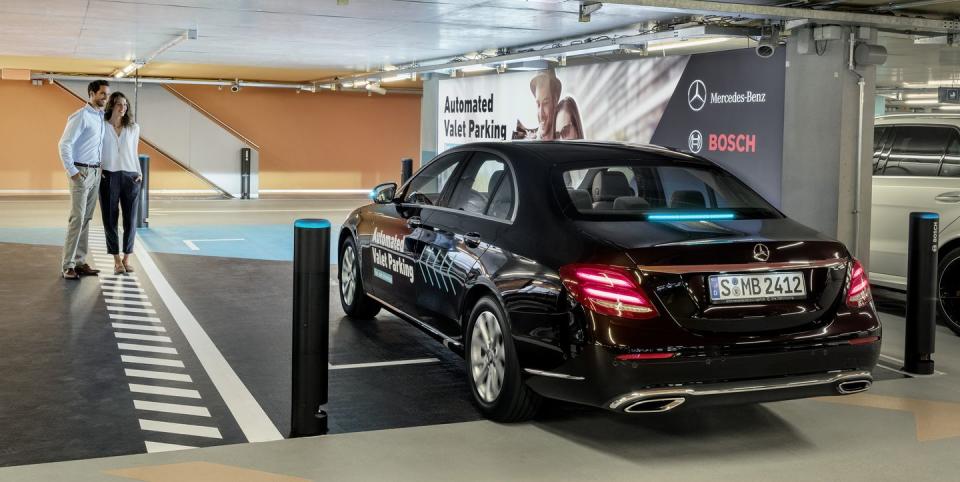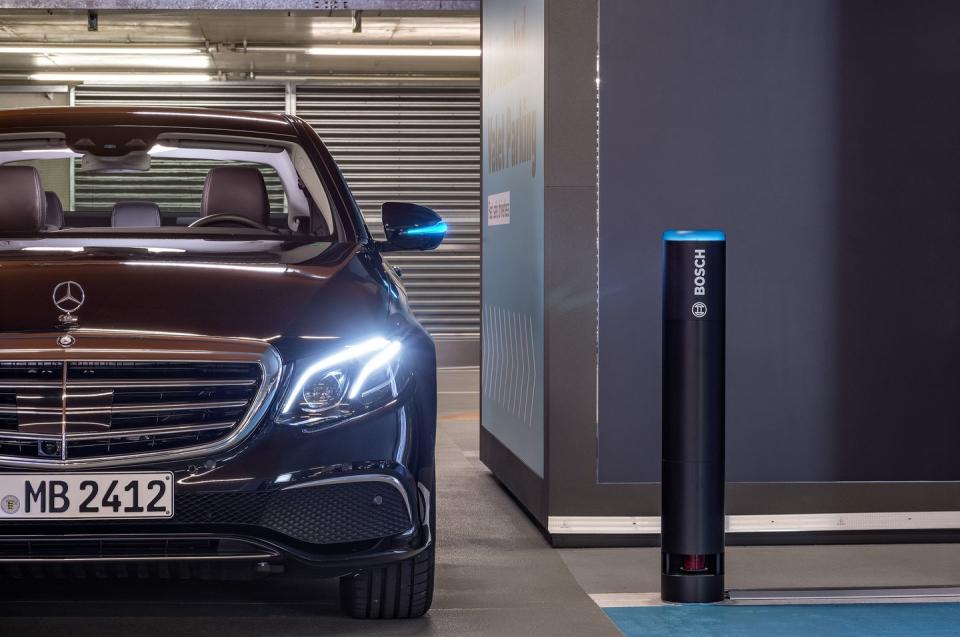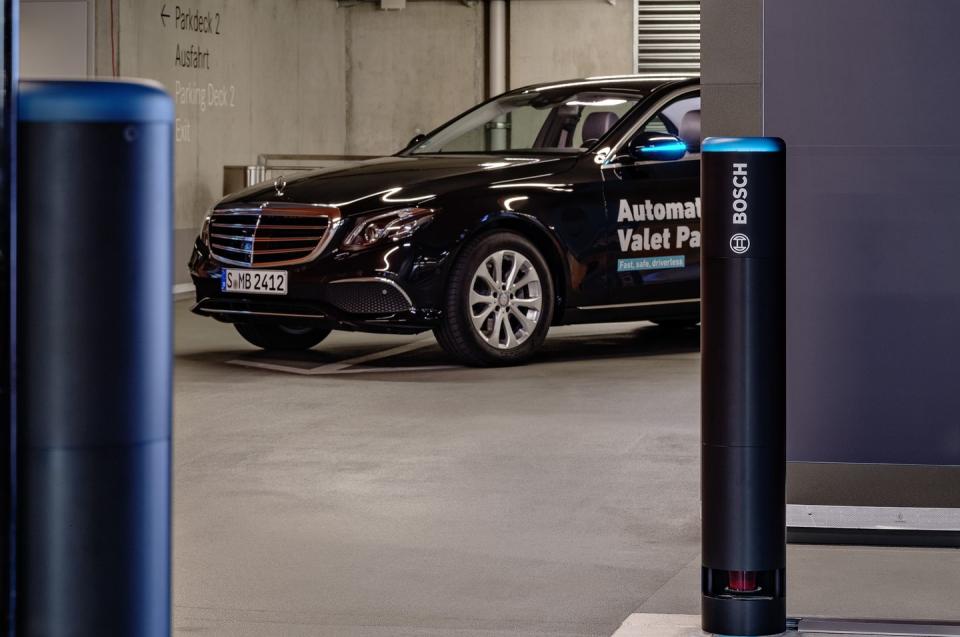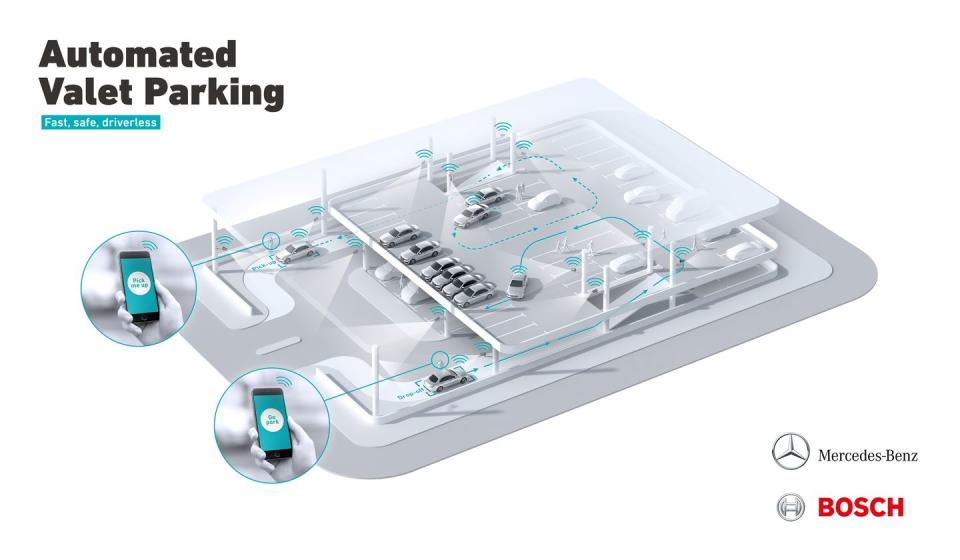Mercedes Gets OK for Driverless Valet Parking Using Bosch Technology

Mercedes-Benz E-class cars have been given the government OK for an autonomous valet-parking program at the Mercedes-Benz Museum in Germany.
This technology is "infrastructure based," meaning all the commands come from the parking garage, not the vehicle—including pedestrian and other object detection.
The Bosch-Daimler technology can be retrofitted in other parking garages, and the pilot is expected to lead to the expansion of autonomous parking, including in the United States.
Valet parking kind of sucks, so it's good news that Bosch and Mercedes-Benz's parent company, Daimler, have just received approval to run a driverless valet system at the Mercedes-Benz Museum in Stuttgart.
That's right, if this pilot program (as we expect) is the start of what will someday be commonplace, say goodbye to the punk changing your radio stations, turning off your automatic climate control, stealing your change, or doing burnouts while you're off dining somewhere.
And no more problem with parking too close to another car, either: Bosch says the fully automated garage of the future could hold 20 percent more cars because driverless valet tech will make closer-proximity parking possible.

It's the first driverless concept to be approved by transportation authorities, Bosch says. Predecessors included a 2017 test program in Stuttgart and a similar pilot test in China that began last year. It's categorized as SAE Level 4 automation, being a limited task that does not require any human intervention. The concept is simple: get out of your car, use a smartphone app to tell the car to park, and it drives away with nobody behind the wheel. Summoning your car back is a similarly straightforward process. The approval is a trifecta between the Stuttgart regional authority, the Baden-Württemberg state transportation ministries, and inspection and certification company TUV Rhineland.
How It Works
In this case, Bosch supplies the sensors and communication infrastructure in the parking garage to tell vehicles where to go. Mercedes-Benz supplies the vehicles with the proper self-driving equipment. Unlike vehicle-based advanced driver-assistance systems such as GM Super Cruise, Tesla Autopilot, and Mercedes-Benz Intelligent Drive, all the commands come from the parking garage, including pedestrian and other object detection.
So why have the garage do the work when cars can or will soon be able to park themselves? Infrastructure-based control allows for a greater margin of safety. There's no limit to the number of sensors to detect vehicles and pedestrians, they can be calibrated specifically to the conditions in the garage, and they're less likely to get dirty than the ones on a vehicle.

The Mercedes-Benz Museum uses current E-class models, which have the necessary hardware onboard to be controlled remotely. We've reached out for clarification on whether or not private vehicles can use the self-parking function, and if this demo mixed in with regular parking. Bosch says the Autonomous Vehicle Parking system can be retrofitted to existing parking structures.
U.S. Implications
This test program will pave the way for similar autonomous systems in the United States, acting as a case study that NHTSA and other U.S. government bodies can rely on for case study data. The stereotype that Germany's stringent regulatory environment makes it a safer place will no doubt lend credibility as well.
The Bosch-Daimler automated valet parking system is still a far cry from pulling up curbside at brunch and letting your car scoot off to a nearby structure. With the entire system contained within the parking garage, the application is very specific and controlled. Which is reassuring from a safety perspective, but also limiting for wider use.

It also demonstrates the complexity of fully autonomous driving in its current form: Practical, safe application requires connected infrastructure, advanced vehicle systems, and government approval. It's also limited to cars with automatic transmissions, among other necessary equipment like electric power steering. In other words, you'll still have to carry singles and tip the kid who just torched your clutch for the near future.
If valet parking makes the image of the (fake) Ferrari 250GT from Ferris Bueller's Day Off fly through the air in your head, or if the idea of handing your keys to a valet brings to mind the frustration of waiting (and waiting) to get the keys back, well, that's exactly the kind of scenario that automated parking could improve.
You Might Also Like

 Yahoo Autos
Yahoo Autos 